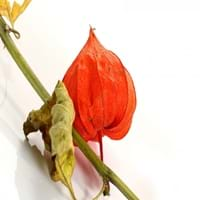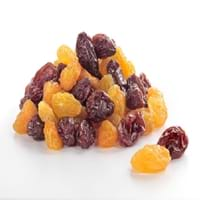Health Benefits
Anti-oxidant properties, Anti-inflammatory properties, Cancer prevention, Maintains healthy cholesterol level, Reduces blood circulation problems, Treatment of cough, fever & sore throat, Treatment of Hypertension
Acidity treatment, Cancer prevention, Good for diabetics, Prevents constipation, Prevents Anaemia
General Benefits
Treatment of asthma, Treatment of cataract, Treatment of hepatitis, Treatment of macular degeneration, Treatment of neurodegenerative diseases
Boosts immune system, Cures fever, Eye care, Fights against infections, Strengthens bones
Skin Benefits
Treatment of Rheumatism & Dermatitis, Treatment of Skin Inflammation
Anti-aging benefits, Reduces wrinkles, Skin rejuvenation
Hair Benefits
Unknown
Protects hair
Allergy Symptoms
NA
Anaphylaxis, Asthma, Breathing difficulty, Coughing, Drop in blood pressure, Hives, Skin rash, Stuffy nose, Swelling of mouth, tongue or lips, Wheezing
Side Effects
Hypertension, Ventricular Tachycardia
Allergic reaction
Lactating Women
Yes
Not Available
Best Time to Eat
As a snack in the late afternoon, Eat the fresh ones, avoid mixing with any other foods, don't eat after meal., Morning time (before lunch), Strictly avoid empty stomach
Any time except an hour after meal
Vitamin B5 (Pantothenic Acid)
Not Available
Vitamin B6 (Pyridoxin)
Not Available
Vitamin B9 (Folic acid)
Not Available
Vitamin C (Ascorbic Acid)
Vitamin K (Phyllochinone)
Not Available
Lutein+Zeaxanthin
Not Available
Water Content
Not Available
Calories in Fresh Fruit with Peel
Calories in Fresh Fruit without Peel
Not Available
Not Available
Calories in Frozen Form
Not Available
Not Available
Calories in Dried Form
Not Available
Not Available
Calories in Canned Form
Not Available
Not Available
Type
Fruit vegetable
Berry
Season
Spring, Summer
All seasons
Varieties
Physalis franchetii, Physalis pruinosa, Physalis peruviana, Physalis heterophylla and Physalis philadelphica
Dark raisins, White or golden raisins, Sultanas and Currants
Seedless Variety
No
Not Available
Color
Bright Yellow, Orange
Black, Blue, Green, Purple, Yellow
Inside Color
Orange
Brown
Origin
Chile, Peru
Central Europe, Western Asia
Grows on
Bushes
Not Available
Soil Type
NA
Clay loam, Sandy loam
Climatic Conditions
NA
Warm
Facts about
NA
- 30th April is known as National Raisin Day.
- Fresno, California is known as raisin capital of the world.
- Half of world's raisin supply is produced in California.
Top Producer
NA
United States of America
Other Countries
NA
Afghanistan, Argentina, Australia, Chile, China, Iran, South Africa, Turkey, Uzbekistan
Top Importer
Netherlands
Europe
Top Exporter
Colombia
Turkey
Botanical Name
Physalis Peruviana
Vitis Vinifera
Synonym
Alkekengi, Herschellia & Pentaphitrum
Not Available
Subkingdom
Tracheobionta
Tracheobionta
Division
Magnoliophyta
Magnoliophyta
Class
Magnoliopsida
Magnoliopsida
Subclass
Asteridae
Not Available
Family
Solanaceae
Vitaceae
Species
Physalis
Vitis vinifera
Generic Group
Not Available
Grape
Difference Between Physalis and Raisin
We might think that Physalis and Raisin are similar with respect to nutritional value and health benefits. But the nutrient content of both fruits is different. Physalis and Raisin Facts such as their taste, shape, color, and size are also distinct. The difference between Physalis and Raisin is explained here.
The amount of calories in 100 gm of fresh Physalis and Raisin with peel is 77.00 kcal and 299.00 kcal and the amount of calories without peel is Not Available and Not Available respectively. Thus, Physalis and Raisin belong to High Calorie Fruits and High Calorie Fruits category.These fruits might or might not differ with respect to their scientific classification. The order of Physalis and Raisin is Solanales and Vitales respectively. Physalis belongs to Solanaceae family and Raisin belongs to Vitaceae family. Physalis belongs to Physalis genus of Physalis species and Raisin belongs to Vitis genus of Vitis vinifera species. Beings plants, both fruits belong to Plantae Kingdom.









